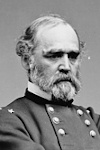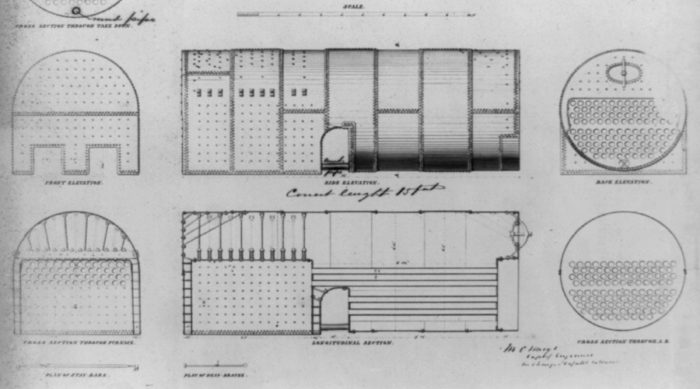
The book The Sights and Secrets of the Capital I mentioned last week is a veritable treasure trove of off-beat information. Today, I want to look at one such digression, in the third section, a subsection is entitled How the Capitol is Warmed and Ventilated. The subsection begins:
At the door of Room No. 59, in the southwestern end of the basement, we notice a card marked “Entrance to the Heating and Ventilating Apparatus.” As we enter the door, a current of air rushes out, and warns us that we are about to enter a different region from that we have been exploring. Passing down the stone steps, we enter a narrow whitewashed passage, lighted with gas, and lines with rows of heavy iron doors, all of which are securely locked.
You can just imagine the author trying each of these doors as he makes his way down the hallway. He continues.
Iron tubes or pipes extend in every direction overhead. There is no one to be seen, and a deep silence reigns over everything, – broken only by the monotonous sound of machinery. Passing on the in the direction of this sound, we see two men sitting in arm-chairs at the end of the passage.
Now, one would imagine that these men – who are introduced as “assistant engineers in charge of the machinery” would have something to say about unauthorized civilians invading their realm, but instead they “are very kind and obliging in showing and explaining the machinery as they are fully aware that their department is one of the most interesting features of the Capitol.”

And it is indeed interesting. At a time when the only engines most people knew about where locomotives, here were
Two small engines, one on the right and the other on the left of the passage, which are placed in rooms of a slightly lower level. The cylinders are upright, and the steam is supplied from the boilers in the furnace room. They work with a droning sound, and the click of the piston rods and cranks is deadened by an abundance of oil. These engines turn large fan-wheels, one of which is eighteen and the other twenty-four feet in diameter, and from which they are separated by glass windows.
Our intrepid author then entered the fan room and discover that “the draught of air is so strong in this room, and the revolutions of the fan are so rapid, that one does not care to remain long in it.”
The engineers then explain that the air moved by the fans is heated by passing it over pipes filled with steam, and then distributed throughout this side of the building – the House had a similar setup on its side, together they were also responsible for heating the center section.
In the summer, the heat was obviously turned off, but the fans remained in operation, drawing fresh air from outside and sending it, untreated, through the registers that dotted the Capitol. While the outside air was almost certainly cooler and fresher than what was inside, the idea of simply blowing hot air does not sound like it really improved matters. It was not until 1928 that a real cooling system was installed.
Next week: Further explorations
